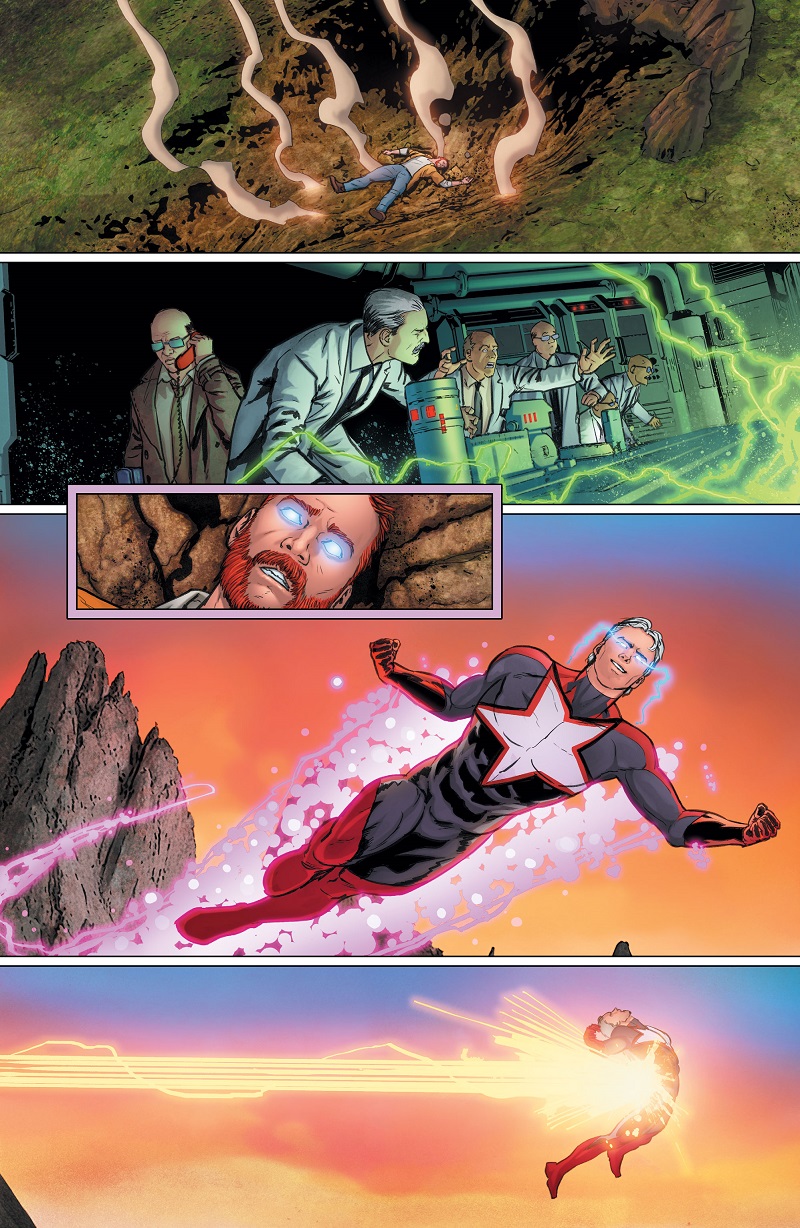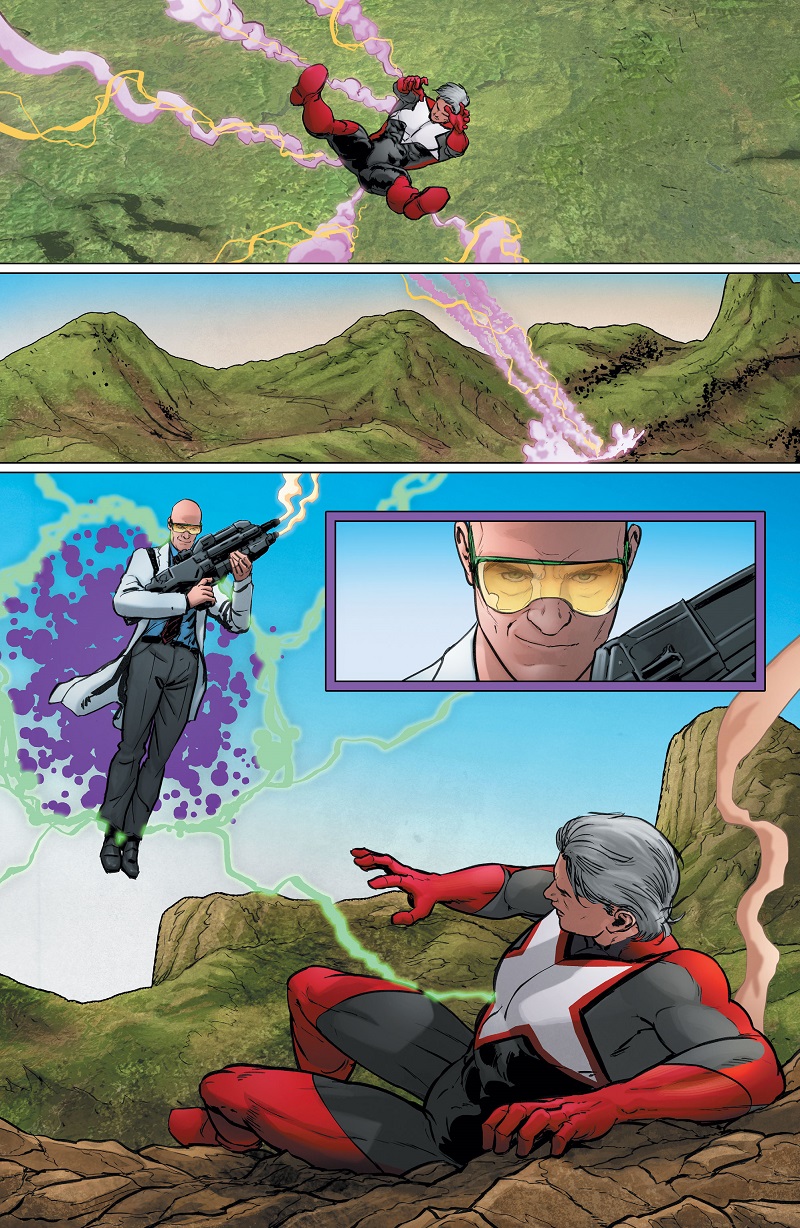Justice League and the Return of Starman to the DC Universe
Justice League is bringing back Starman with some new wrinkles to his origin that have ramifications for DC Universe continuity.
Few characters define legacy in the DC Universe quite like Starman. Sure, there have been plenty of Flashes, various members of the JSA have passed their mantles down to younger heroes, and every now and then someone new puts on Bruce Wayne’s pointy cowl. But Starman has been a near constant presence for almost 80 years of DC history, although depending on which decade you’re looking at, you’re likely going to be looking at a different Starman.
While Justice League #8 once again puts the focus back on Lex Luthor and the Legion of Doom (which we discussed with writer James Tynion IV in more detail right here, it also continues the book’s tradition of adding new details to the DC Universe, and even subtly rewriting little pieces of DC continuity. It does this via the reintroduction of the Will Payton version of Starman.
The Will Payton Starman first appeared in 1988, launched in the pages of his own solo title by Roger Stern and Tom Lyle. The book ran for four years, and Will Payton vacated the title when he was apparently (but not actually) killed by Eclipso, and has languished in relative obscurity since. But Justice League #8 not only brings Will Payton into the current era of DC Comics, but also offers some subtle changes to his history and the nature of his powers. And it does it while paying loving tribute to his early stories.

“If you actually go back to the 1988 first issue of Starman, you’ll see that some of those images in the first pages of Justice League #8 are actually based on the panels from the original,” James Tynion IV says. “That is the original design of the Stellaron-5 satellite that gave Will Payton his powers.”
The source of Payton’s powers in that original story, however, has changed. Originally just your typical cosmic radiation getting harnessed for various purposes (comics are awesome, everyone!), it was later revealed to be the energy essence of a previous Starman, Steve Ditko’s brilliant Prince Gavyn version of the character. With Justice League #8, the energy beam from the satellite is revealed as an attempt to harness the power of the Totality, the cosmic event that has been at the center of recent issues of the book.
“From the first page of Justice League #1, the idea that the Totality, as it made its journey to Earth from the Source Wall, flitted through every moment of time backwards and forwards,” Tynion says. “We’re starting to see what exactly that means, and the ways that that mystery is built.”
The concept of the Totality moving through time is even more relevant here, as Justice League has now fixed Will Payton’s origin in the DC Universe of 1988, the time of his origin story’s initial publication. This has ramifications both for the Starman legacy and how certain facets of DC continuity function in the post-Rebirth era. The best way to describe this is how the Justice Society have always been associated with the DC of the 1940s and early 1950s, when the majority of their adventures were published. While older versions of them were later brought into modern continuity, other characters, such as Batman, Superman, and Wonder Woman, operate on a “sliding timeline” where their origin stories are always set roughly 20-30 years before currently published adventures, and they always exist alongside modern events.

“One thing that tends to happen in the evolution of DC continuity is there are characters who kind of pop up in a moment of continuity but then the mythology pulls away from them and starts focusing on new facets,” Tynion says. “The way I’ve always processed it is that once the mythology moves on, it’s like the character is almost left in that era because they represent that era, and they don’t necessarily become a part of the sliding timeline.”
Using this model for Starman is a natural evolution of how the various incarnations of the characters have been portrayed through the years. Ted Knight, the original Starman, was a Justice Society member, and it is generally accepted that his adventures took place between the early 1940s and mid-1950s. James Robinson’s essential Starman series established that one of the shorter-lived incarnations of the character, Mikaal Tomas, was essentially “fixed” in the 1970s, the decade when his initial adventure was published. Placing Will Payton in the era in which he was published, rather than as a contemporary of the current Justice League, feels like a continuation of that tradition. “We did want to sort of let the character embody the moment that he stood in,” Tynion says.
I couldn’t help but note that the Jack Knight Starman is a character who feels right at home in the mid-to-late 1990s when he was published. While Tynion is quick to point out that he isn’t “making any definitive statements about how DC continuity works,” he does have ideas about where the other Starmen and related characters throughout history fit in DC’s timeline. We’ll have to wait a little longer for those answers, though.
Tying Will Payton’s origin into the Totality is going to fuel elements of the Justice League story over the next year. “I am a tremendous fan of the Starman mythology and the character,” Tynion says. “The power that’s inside him is connected to the Totality in really interesting ways, and it will fuel a lot of mystery over the next year in Justice League. We are telling a huge story that stretches to every moment of DC continuity, and we have incredible mysteries. Starman is going to be key to all of that.”
Mike Cecchini is the Editor in Chief of Den of Geek. You can read more of his work here. Follow him on Twitter @wayoutstuff.
